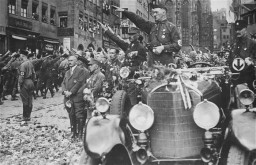<< Previous | Displaying results 6451-6500 of 6720 for "" | Next >>
-
Allied Nations Issue Statement on Mass Murder
Timeline EventDecember 17, 1942. On this date, the Allied nations officially declared that German authorities were engaging in the mass murder of European Jews.
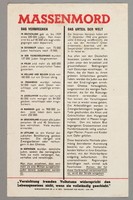
-
Danish Jews Escape
Timeline EventSeptember 20-October, 1943. On this date, Danish citizens and resistance organizations helped approx. 7,200 Danish Jews escape to Sweden.
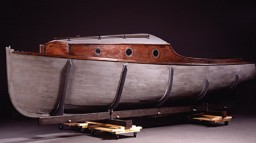
-
Creation of War Refugee Board
Timeline EventJanuary 22, 1944. On this date, Franklin D. Roosevelt issued Executive Order 9417 creating the War Refugee Board.
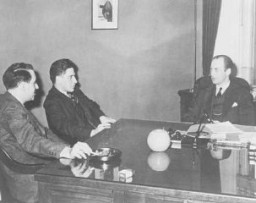
-
Liquidation of “Gypsy Family Camp” at Auschwitz-Birkenau
Timeline EventAugust 2, 1944. On this date, the SS liquidated the "Gypsy family camp" Blle at Auschwitz-Birkenau.

-
Destruction of the Lodz Ghetto
Timeline EventBeginning on August 9, SS and police units liquidate the Lodz ghetto.
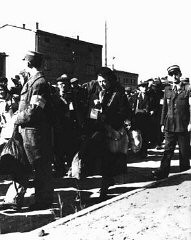
-
Allied Troops Encounter Natzweiler-Struthof
Timeline EventNovember 23, 1944. On this date, Allied troops arrived at the abandoned Natzweiler-Struthof concentration camp.
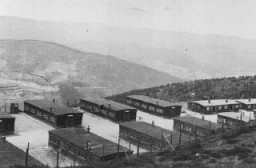
-
Himmler Orders Demolition of Auschwitz Gas Chambers and Crematoria
Timeline EventNovember 25, 1944. On this date, camp authorities demolished the gas chambers and crematoria at Auschwitz-Birkenau.

-
Death March from Auschwitz
Timeline EventJanuary 17, 1945. On this date, SS units evacuated prisoners from the Auschwitz camp complex as Soviet forces approached.

-
Liberation of Gross-Rosen
Timeline EventFebruary 13, 1945. On this date, Soviet forces liberated the Gross-Rosen concentration camp.
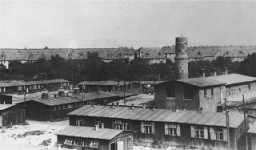
-
Surrender of German and Hungarian Units
Timeline EventFebruary 13, 1945. On this date, Soviet troops accepted the surrender of the last German and Hungarian troops in Budapest.
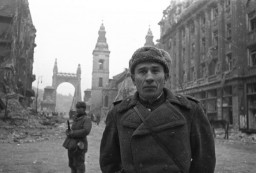
-
Liberation of Westerbork
Timeline EventApril 12, 1945. On this date, Canadian forces liberated prisoners at the Westerbork camp in the Netherlands.
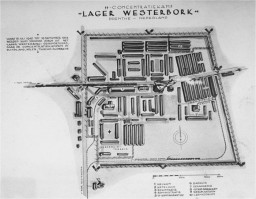
-
Evacuation of Prisoners from Sachsenhausen
Timeline EventApril 20-21, 1945. On this date, SS guards evacuated prisoners from the Sachsenausen concentration camp in Germany.

-
Soviet and US Troops Meet at Torgau
Timeline EventApril 25, 1945. On this date, Soviet and American troops met at Torgau, Germany.
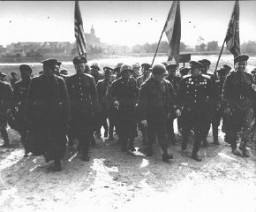
-
Hitler Commits Suicide
Timeline EventApril 30, 1945. On this date, Adolf Hitler committed suicide in his Berlin bunker.
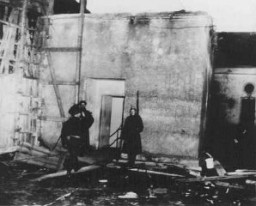
-
Japan Surrenders
Timeline EventSeptember 2, 1945. On this date, Japan signed their surrender aboard the USS Missouri and ended World War II.
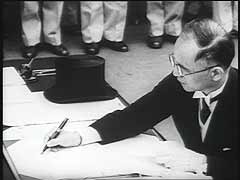
-
New Directive on Immigrant Visas to the US
Timeline EventDecember 22, 1945. On this date, Harry S. Truman issued a directive giving US immigration preference to displaced persons.
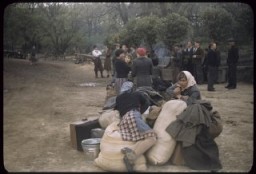
-
Liberation of Dora-Mittelbau
Timeline EventApril 11, 1945. On this date, the US Army liberated the Dora-Mittelbau (Nordhausen) concentration camp in Germany.
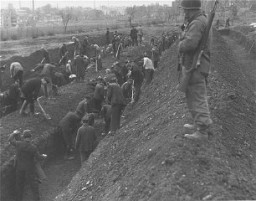
-
Liberation of Lublin-Majdanek
Timeline EventJuly 23, 1944. On this date, Soviet forces liberated the Lublin/Majdanek concentration camp in Poland.
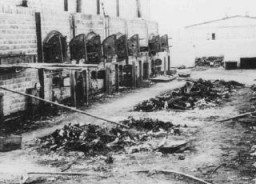
-
Film at the Nuremberg Trial
Timeline EventNovember 29, 1945. On this date, the International Military Tribunal prosecution presented a film titled "The Nazi Concentration Camps."
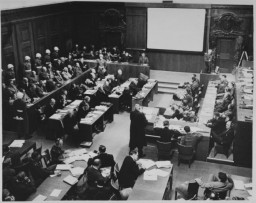
-
US Prosecutor Jackson Delivers Opening Statement to International Military Tribunal
Timeline EventNovember 21, 1945. On this date, Robert H. Jackson delivered opening statements at the International Military Tribunal in Nuremberg.
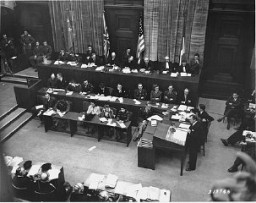
-
US Forces Liberate Flossenbürg
Timeline EventApril 23, 1945. On this date, US forces liberated the Flossenbürg camp in Germany.

-
Liberation of Ravensbrück
Timeline EventApril 30, 1945. On this date, Soviet forces arrived at Ravensbrück concentration camp in Germany.
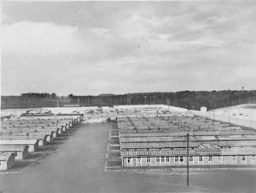
-
British Forces Approach Neuengamme
Timeline EventMay 4, 1945. On this date, the SS troops evacuated approximately 9,000 prisoners from Neuengamme in advance of the British troops' approach.
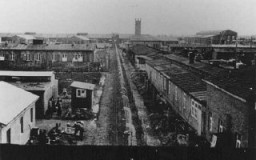
-
Liberation of Mauthausen
Timeline EventMay 5, 1945. On this date, US troops liberated Mauthausen concentration camp. Days before, a group of prisoners took control of Mauthausen.
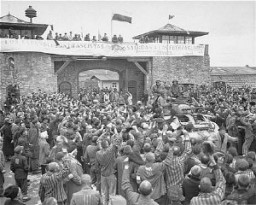
-
Page 1 of Letter from US Soldier Aaron Eiferman
Timeline EventApril 27, 1945. On this date, US soldier Aaron A. Eiferman wrote a letter to his wife describing conditions in Kaufering IV in Germany.
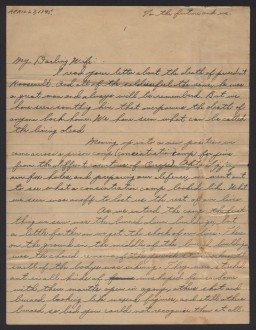
-
Liberation of Gunskirchen
Timeline EventMay 4, 1945. On this date, the US Army liberated Gunskirchen, a subcamp of Mauthausen in Austria.
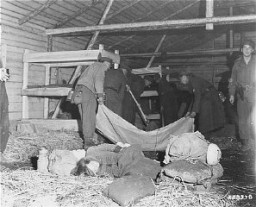
-
Meeting between Franklin D. Roosevelt and Henry Morgenthau Jr.
Timeline EventJanuary 16, 1944. On this date, Franklin D. Roosevelt and Henry Morgenthau Jr. met to discuss the rescue of European Jews.
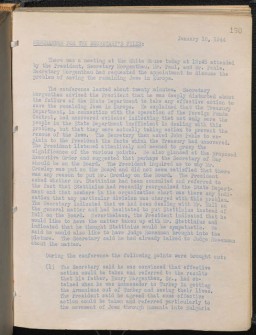
-
The Nazi Plan
Timeline EventDecember 11, 1945. On this date, the film "The Nazi Plan" is shown as evidence at the International Military Tribunal at Nuremberg.
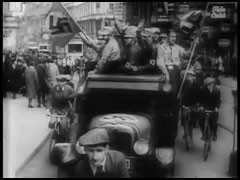
-
Yalta Conference
Timeline EventFebruary 4-11, 1945. On this date, Allied power leaders met at Yalta in the Soviet Union to discuss the postwar order.
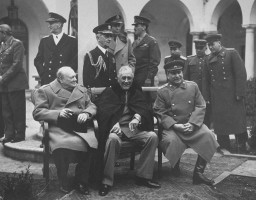
-
Kielce Pogrom
Timeline EventJuly 4, 1946. On this date, there was a massacre of Jews in Kielce, Poland.
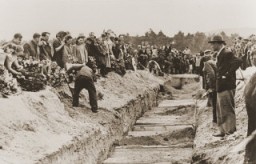
-
Nuremberg Trial Verdicts
Timeline EventOctober 1, 1946. On this date, the International Military Tribunal sentenced 12 Nazi officials to death.

-
US Ratifies Genocide Convention
Timeline EventNovember 5, 1988. On this date, the US ratified the UN Convention on the Prevention and Punishment of Genocide.
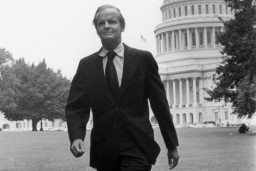
-
International Criminal Court
Timeline EventJuly 17, 1998. On this date, the Rome Statute established the International Criminal Court, a permanent judicial body to try genocide and war crimes.
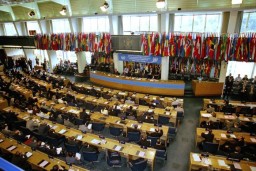
-
First Conviction for Genocide
Timeline EventSeptember 2, 1998. On this date, the International Criminal Tribunal for Rwanda found Jean-Paul Akayesu guily of genocide and crimes against humanity.
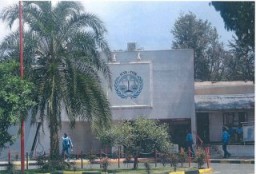
-
United States Declares Genocide in Darfur
Timeline EventSeptember 9, 2004. On this date, Colin Powell labelled the events in Darfur as "genocide."
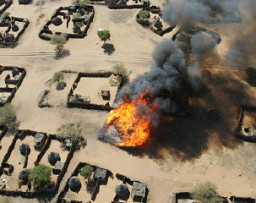
-
UN Convention on the Prevention and Punishment of Genocide
Timeline EventJanuary 12, 1951. On this date, the United Nations Convention on the Prevention and Punishment of Genocide entered into force.
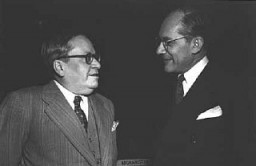
-
Raphael Lemkin Dies
Timeline EventAugust 28, 1959. On this date, Raphael Lemkin died. He coined the term "genocide" and worked tirelessly for the term to become international law.
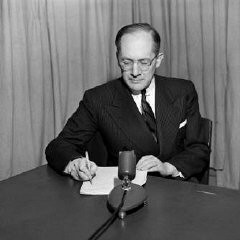
-
South Sudan Declares Independence
Timeline EventJuly 9, 2011. On this date, the Republic of South Sudan declared its independence from Sudan.

-
ICC Issues First Arrest Warrant for Head of State
Timeline EventMarch 4, 2009. On this date, the International Criminal Court (ICC) issued an arrest warrant charging Sudanese President Omar al-Bashir on counts of crimes against humanity and war crimes.
-
First Person Arrested Under ICC Warrant
Timeline EventMarch 17, 2006. On this date, Thomas Lubanga became the first person arrested under an International Criminal Court (ICC) warrant.
-
DRC Holds First Elections in 40 Years
Timeline EventJuly 30, 2006. On this date, the Democratic Republic of the Congo held its first multi-party election in over 40 years.
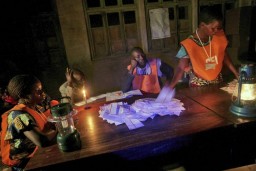
-
International Criminal Court's First Investigation
Timeline EventJune 23, 2004. On this date, the International Criminal Court (ICC) announced their first investigation which focused on the Democratic Republic of the Congo.
-
Treaty of Versailles Presented to German Delegation
Timeline EventMay 7, 1919. On this date, the Treaty of Versailles was presented to the German delegation. The treaty's "War Guilt Clause" forced Germany to accept responsibility for initiating WWI.
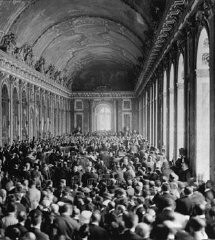
-
Beer Hall Putsch
Timeline EventNovember 9, 1923. On this date, Adolf Hitler and the Nazi Party attempted to overthrow the Weimar Republic.
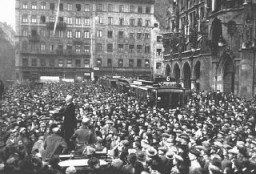
-
Anne Frank Born
Timeline EventJune 12, 1929. On this date, future diarist Anne Frank was born to Otto and Edith Frank. She would become a symbol for the children who died in the Holocaust.
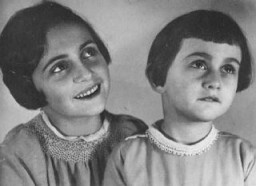
-
Nazi Party Platform
Timeline EventFebruary 24, 1920. On this date, Adolf Hitler presented a 25-point Program (the Nazi Party Platform) to a Nazi Party meeting.
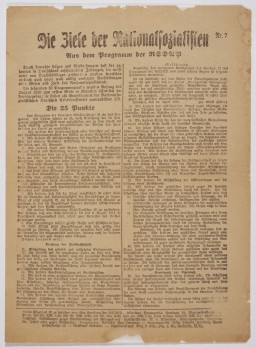
-
Hitler Campaign Speech
Timeline EventJuly 22, 1932. On this date, Adolf Hitler delivered a campaign speech promising salvation for Germany.
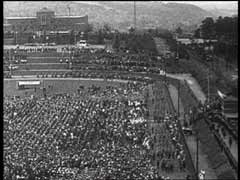
-
Bela Weichherz Diary Entry
Timeline EventJanuary 24, 1931. On this date, Bela Weichherz wrote in a diary about his daughter. All of the family would perish in the Holocaust.
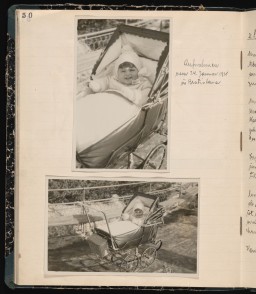
-
Adolf Hitler Issues Comment on the "Jewish Question"
Timeline EventSeptember 16, 1919. On this date, Adolf Hitler issued his first written comment on the so-called Jewish Question.
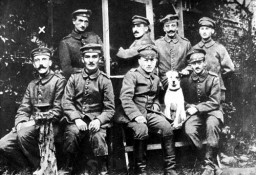
-
Adolf Hitler Becomes Leader of the Reestablished Nazi Party
Timeline EventFebruary 27, 1925. On this date, Adolf Hitler declared the reformulation of the Nazi Party with himself as the leader.
